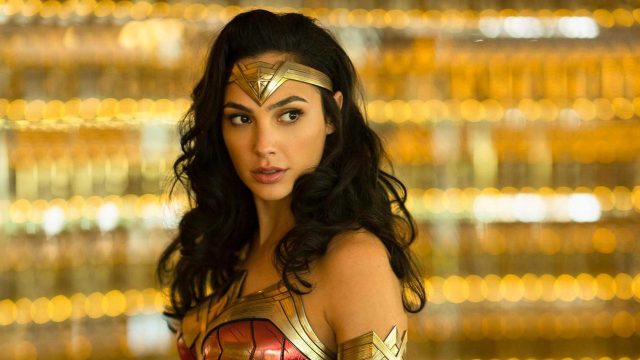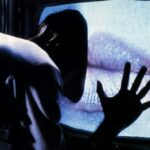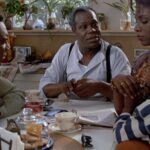Wonder Woman 1984: Go Ahead and Jump, by David Bax

Since it’s right there in the title, we should start by addressing the question of just how 80s Wonder Woman 1984 is. The answer is Very but it gets most of the outrageous (but still fun) stuff out of the way in its opening sequence, set at–where else?–a shopping mall where leg-warmer clad ladies do aerobics and teens in coke-bottle glasses play arcade games. Things get a little less self-conscious after that but Jenkins still has fun with it, using the main villain’s double-breasted, peak-lapeled, pinstriped power suit as a ridiculous and ironic counterpoint to how dangerous and evil he eventually becomes. As most of the movie’s action take place in the nation’s capital, I also appreciated the more specific references to 80s D.C. hardcore; a Bad Brains t-shirt here, a flyer for a Minor Threat show there. But it turns out Jenkins has some deeper ideas to explore about the decade and the country Diana (Gal Gadot) has adopted as her new home after the events of 2017’s Wonder Woman.
Now working at the Smithsonian, Diana’s latest adventure kicks off when her new coworker, gemologist Dr. Barbara Minerva (Kristen Wiig), is asked to investigate the origins of a mysterious, crystal-like object uncovered by the FBI after a foiled heist. It turns out to have magic properties that briefly make welcome improvements to the lives of both Diana and Barbara but, when it falls into the hands of a wannabe oil tycoon scam artist named Max Lord (Pedro Pascal), things get very bad very quickly for pretty much everyone.
Minor spoilers ahead for anyone who has completely avoided even publicity materials for Wonder Woman 1984 but one of the magical things that happens is the sudden return of Steve Trevor (Chris Pine), unchanged from the moment of his death at the end of Wonder Woman 70 years earlier. He has emerged on the other end of the American century into a country and a decade that seems unstoppable, a cornucopia of instant gratification and unquestioned exceptionalism. But Lord’s vision of a world of unbridled, self-centered wish fulfillment reveals the corrupt values underneath the materialistic tech-utopia that so wows Trevor.
Lord represents a change in tone from the gleeful, unadulterated evil of Wonder Woman‘s villains. He’s as much a victim of a culture of empty promises at the film’s beginning as he is its chief perpetrator by the end. That sympathy extends to Wonder Woman 1984‘s secondary villain, as well (superhero sequels always have to have at least two villains). The less revealed the better about one of the film’s best characters and performances but if you find yourself suspicious of a movie positioning high heels as the ultimate symbol of female empowerment, trust that there are more complex things at work there.
As with its predecessor, the fight sequences in Wonder Woman 1984 are the weakest parts. The influence of producer Zack Snyder is most obvious here, with speed-ramped kicks, punches and sweeps that are more video-gamey than cinematic.
Anyway, Jenkins has established herself as one of the best directors of superhero movies precisely because she understands that being able to kick people’s asses is not the most enticing thing superpowers have to offer. Right from the lengthy prologue–a sort of Themysciran Ninja Warrior flashback–she shows an understanding that these stories can tap into our primal desire to leap through the air, to soar and swing unfettered. She taps into our deepest dreams of freedom, not our superficial vengeance fantasies. Where too many directors of these types of films use their visual effects budget to imagine new levels of destruction, Jenkins would rather show us the novel beauty of an invisible jet soaring through a sky full of fireworks.




























